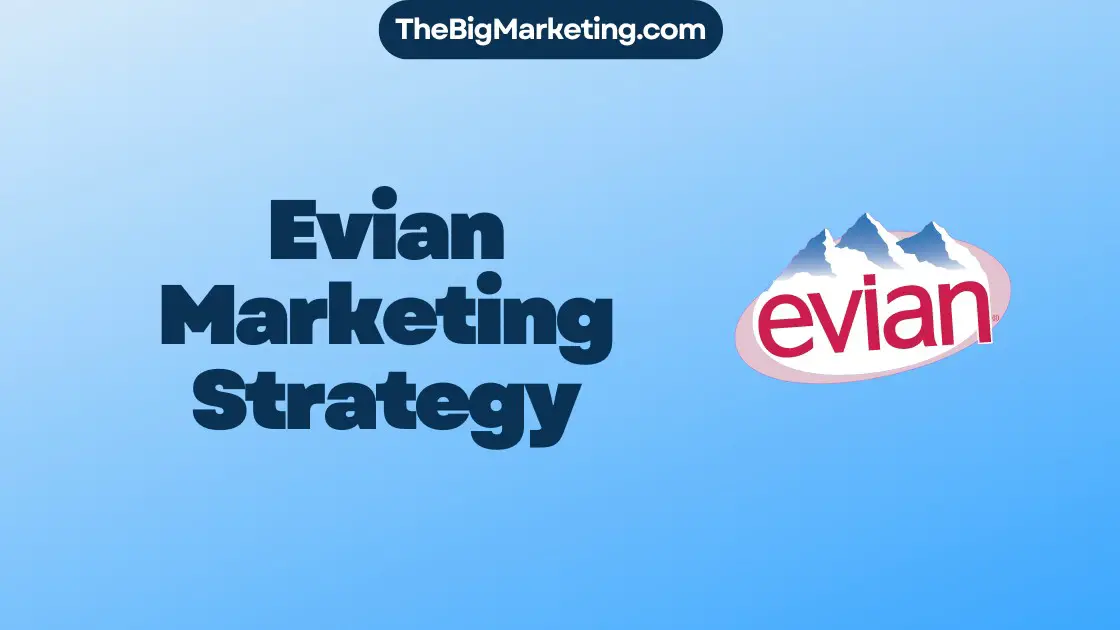The Hershey Company, founded in 1894, is a leading chocolate producer renowned for its commitment to product originality and superior quality. In this case study, we delve into Hershey’s marketing strategy, uncovering their branding tactics, advertising approach, promotional techniques, market positioning, competitive analysis, digital marketing efforts, and social media strategy.
Key Takeaways:
- Hershey’s Marketing Strategy emphasizes digital media and social media platforms to engage customers.
- They employ micro-marketing techniques and themed campaigns tailored to their diverse consumer base.
- Hershey’s brand positioning centers around brand equity, awareness, and reliability.
- Their digital marketing tactics focus on engaging customers and creating an emotional connection with the brand.
- Hershey’s utilizes market segmentation and micro-marketing to effectively engage with their target audience.
Hershey’s Brand Positioning
Hershey’s brand positioning revolves around three key pillars: brand equity, brand awareness, and reliability. With a long and storied history dating back to 1894, Hershey’s has established itself as a leading chocolate producer with a strong reputation for quality and satisfaction.
Brand Equity: Hershey’s core brands, including Kisses, Twizzlers, Reese’s, Kit Kat, and Hershey Bar, have become synonymous with indulgence and enjoyment. These brands have earned the trust and loyalty of consumers, making Hershey’s a trusted name in the confectionery industry.
Brand Awareness: Hershey’s has successfully built strong brand awareness through their strategic marketing efforts. Their iconic logo and memorable packaging make their products instantly recognizable on store shelves, helping to solidify their position as a market leader.
Reliability: Hershey’s is known for its commitment to innovation, originality, and superior quality. The company continually introduces new and unique product offerings, keeping consumers engaged and excited about their brand. The use of high-quality ingredients ensures that every Hershey’s product delivers a consistently delightful experience.
By focusing on brand equity, brand awareness, and reliability, Hershey’s has successfully positioned itself as a trusted and beloved brand in the chocolate industry.
Hershey’s Digital Marketing Tactics
Hershey’s employs a comprehensive digital marketing strategy to reach and engage its target audience effectively. One of the key components of this strategy is leveraging various social media platforms to connect with consumers and create brand awareness.
- Facebook: Hershey’s maintains an active presence on Facebook, where they regularly post updates about their products, promotions, and events. They also utilize engaging visuals and videos to capture the attention of their followers.
- Twitter: By using Twitter, Hershey’s can share timely updates, respond to customer inquiries, and participate in relevant conversations. They make sure to include trending hashtags and relevant keywords to increase their visibility and reach.
- Instagram: Hershey’s leverages the visual appeal of Instagram to showcase their products and engage their audience. They share mouth-watering images of their chocolates, tempting recipes, and behind-the-scenes content to generate excitement and interest.
- YouTube: Video content plays a crucial role in Hershey’s digital marketing strategy. YouTube serves as a platform for them to share recipe videos, product tutorials, and captivating advertisements. These videos not only inform and entertain but also create an emotional connection with the viewers.
In addition to social media platforms, Hershey’s website is a vital element of their digital marketing tactics. The website serves as a centralized hub for product information, recipes, and videos. It offers a user-friendly experience with dedicated sections that enable visitors to explore different recipes, watch videos, and get inspired by new chocolate ideas. This valuable content keeps consumers engaged and encourages them to spend more time on the website.
Hershey’s digital marketing tactics are centered around engaging customers, providing them with valuable information, and creating an emotional connection with the brand. By utilizing social media platforms and maintaining an interactive website, Hershey’s ensures that their target audience is always connected and informed about their latest offerings.
Hershey’s Market Segmentation
Hershey’s understands the significance of market segmentation in reaching and engaging their target audience effectively. By dividing their consumer base into distinct customer segments, Hershey’s can tailor their marketing efforts to meet the specific needs and preferences of each group. This approach allows them to create highly targeted initiatives that resonate with customers on a personal level.
One of the key strategies Hershey’s employs is micro-marketing, which involves developing and implementing customized marketing campaigns for different customer segments. This approach enables Hershey’s to deliver relevant messages, products, and experiences to each unique group, ensuring maximum impact and customer satisfaction.
For instance, Hershey’s might create targeted campaigns for families with children, emphasizing their range of fun and playful chocolate treats. Simultaneously, they could develop separate initiatives catering to health-conscious individuals, highlighting their selection of dark chocolate options and promoting the use of high-quality ingredients.
Market segmentation and micro-marketing allow Hershey’s to establish a deep connection with their customer segments by addressing their specific desires and preferences. By doing so, Hershey’s can build brand loyalty and drive customer retention, ultimately strengthening their position in the market.
Hershey’s Competitive Analysis
Hershey’s faces fierce competition from major players in the chocolate industry. Mars, Nestle, and Mondelez International are some of the most prominent competitors in the market. To stay ahead, Hershey’s conducts a comprehensive competitive analysis that allows them to gain insights into the industry landscape, understand competitor strategies, and stay updated on market trends.
This detailed analysis plays a crucial role in Hershey’s decision-making process. By thoroughly evaluating their competitors, Hershey’s can make more informed business decisions and identify opportunities for growth and differentiation. It also enables them to stay proactive and respond effectively to changes in the market.
| Major Competitors | Strengths | Weaknesses |
|---|---|---|
| Mars | Strong global presence and diversified product portfolio | Relatively higher prices compared to some competitors |
| Nestle | Wide range of products and brands across various categories | Less focus on chocolate as a core offering |
| Mondelez International | Strong brand portfolio with global recognition | Relatively lower brand loyalty |
The competitive analysis provides Hershey’s with invaluable information about their major competitors. It enables Hershey’s to identify and capitalize on their own strengths while mitigating any weaknesses. This strategic understanding helps Hershey’s stay innovative and responsive to evolving consumer preferences and market dynamics.
Hershey’s Brand Differentiation
Hershey’s brand differentiation lies in its commitment to product originality, unique packaging, and high-quality ingredients. With a rich history of innovation, Hershey’s has introduced iconic chocolate bars like Reese’s, Kit Kat, Hershey’s Kisses, and York Peppermint Patties.
Their products stand out on store shelves not only for their delectable taste but also for their distinctive packaging design. Hershey’s understands the importance of creating a visual impact to attract consumers, and their packaging does just that.
Furthermore, Hershey’s is dedicated to using only the finest ingredients in their chocolates. Their unwavering commitment to quality ensures that each bite of a Hershey’s chocolate bar is an indulgent experience.
With such a strong focus on product originality, unique packaging, and high-quality ingredients, Hershey’s has successfully positioned itself as a leader in the confectionery market.
| Brand Differentiation Factors | Description |
|---|---|
| Product Originality | Hershey’s introduces innovative chocolate bars that captivate consumers’ taste buds. |
| Unique Packaging | Hershey’s products feature eye-catching packaging designs that set them apart on store shelves. |
| High-Quality Ingredients | Hershey’s uses only the finest ingredients, ensuring superior taste and quality. |
Through its brand differentiation efforts, Hershey’s continues to captivate consumers and maintain its position as a trusted and beloved chocolate brand.
Hershey’s Marketing Mix
Hershey’s marketing strategy revolves around the core elements of the marketing mix: product, price, place, and promotion. These factors work together to strategically position Hershey’s products in the market and drive sales.
Product Strategy
Hershey’s places a strong emphasis on building and maintaining strong and valued brands. They focus on product innovation and continuously strive to provide high-quality products that meet the evolving preferences of their consumers. By consistently introducing new flavors, varieties, and packaging designs, Hershey’s keeps their product lineup fresh and exciting.
Price
Hershey’s employs competitive pricing strategies to ensure their products provide value for consumers while remaining competitive within the market. They carefully analyze market trends and consumer behavior to set appropriate prices that balance affordability with perceived value.
Place
Hershey’s uses an extensive network of distribution channels to effectively place their products in the market. They work with a range of retailers, including grocery stores, convenience stores, and online platforms, to ensure their products are easily accessible to consumers. Hershey’s strategically selects distribution partners based on their market presence and target audience.
Promotion
Hershey’s utilizes a variety of advertising and promotional programs to create awareness around their products and drive sales. They execute targeted campaigns across various media channels, such as television, print, digital, and social media, to reach their diverse consumer base. Hershey’s also collaborates with influencers, sponsors events, and engages in cause marketing initiatives to further enhance their brand image and connect with their target audience.
| Element | Description |
|---|---|
| Product Strategy | Hershey’s focuses on product innovation, strong brand development, and high-quality offerings to meet consumer preferences. |
| Price | Hershey’s utilizes competitive pricing strategies to balance affordability and perceived value. |
| Place | Hershey’s leverages an extensive distribution network to ensure their products are readily available to consumers. |
| Promotion | Hershey’s employs various advertising and promotional initiatives across multiple media channels to raise awareness and drive sales. |
Leveraging AI for More Efficiency
Hershey’s recognizes the power of AI in revolutionizing marketing strategies. By leveraging AI technology, they have taken automation to the next level, specifically in their media bidding strategy. Hershey’s has developed a custom algorithm that analyzes sales data, enabling them to make better-informed decisions and optimize their ad spending for more efficient results.
Through AI automation, Hershey’s can identify underperforming markets and allocate their resources accordingly. This strategic approach helps them focus on areas with the highest growth potential and drive higher sell-through rates during peak seasons. By embracing AI in marketing, Hershey’s has gained a competitive edge and enhanced their overall marketing efficiency.
Optimizing Media Bidding Strategy with AI
Hershey’s AI-powered algorithm for media bidding is a game-changer in their advertising efforts. This system allows them to analyze real-time data and automatically adjust their bids to maximize their return on investment. Through continuous learning, the algorithm adapts and improves over time, ensuring that Hershey’s remains at the forefront of media buying strategies.
With AI automation, Hershey’s eliminates manual processes and human biases. The algorithm processes vast amounts of data, identifying patterns and trends that are crucial for effective media buying. As a result, Hershey’s can optimize their ad placements, reach their target audience more effectively, and achieve better overall marketing performance.
Thinking Holistically About Data
Hershey’s understands the significance of a data-driven marketing strategy and takes a holistic approach to optimize their marketing efforts. They recognize the power of comprehensive data analysis in making informed decisions and maximizing returns on investment. To achieve this, Hershey’s consolidates their media into the Google Marketing Platform, leveraging the platform’s advanced analytics tools and Google AI capabilities.
The Google Marketing Platform provides Hershey’s with a comprehensive view of their data, enabling them to gain valuable insights into consumer behavior, preferences, and market trends. By analyzing this data, Hershey’s can better understand their target audience and refine their marketing strategies accordingly. This holistic approach allows Hershey’s to optimize their campaigns, deliver more personalized content, and ultimately drive higher engagement and conversions.
By integrating the Google Marketing Platform into their marketing operations, Hershey’s benefits from a seamless and efficient workflow. The platform’s robust analytics capabilities empower their marketing team to identify trends, track key performance indicators, and measure the effectiveness of their campaigns.
In addition to data analysis, the Google Marketing Platform also offers automation features that streamline Hershey’s marketing processes. Through automation, Hershey’s can save time and resources, allowing them to focus on strategy and creativity. By leveraging AI and automation, Hershey’s can optimize their media buying and content delivery, ensuring that their marketing efforts are targeted and impactful.
In conclusion, Hershey’s adopts a data-driven, holistic approach to marketing by utilizing the Google Marketing Platform. This enables them to carefully analyze and interpret data, make informed decisions, and optimize their marketing strategies. By leveraging technology and automation, Hershey’s stays at the forefront of digital marketing, delivering personalized and impactful experiences to their target audience.
Remembering to Pull at the Heart Strings
Hershey’s understands the value of creativity and personalized media in marketing. While data-driven strategies play a crucial role, Hershey’s emphasizes the importance of creating an emotional connection with consumers. By appealing to their hearts, Hershey’s captures the attention and loyalty of their target audience.
Through deep consumer insights, Hershey’s crafts advertising campaigns that evoke strong emotions. One example is the Reese’s brand campaign, which successfully engaged fans and sparked a powerful emotional connection with the product. By tapping into the desires, aspirations, and memories of their consumers, Hershey’s establishes a lasting bond.
Creativity in marketing is essential for Hershey’s to stand out in a crowded space. They strive to differentiate themselves by delivering unique and impactful advertising messages. By leveraging personalized media, Hershey’s creates tailored experiences that resonate deeply with their audience. Whether it’s through personalized storytelling, interactive content, or customized promotions, Hershey’s ensures that their marketing efforts leave a lasting impression.
Conclusion
Hershey’s Marketing Strategy is a testament to their commitment to success in the confectionery industry. Through strong brand positioning, digital marketing tactics, market segmentation, competitive analysis, brand differentiation, and a comprehensive marketing mix, Hershey’s has established itself as a leading chocolate producer. Their innovative approach to leveraging AI, considering data holistically, and creating emotional connections with consumers has played a pivotal role in their achievements.
Looking ahead, Hershey’s is poised for future growth. They understand the importance of continuously evolving their marketing strategy to adapt to changing consumer trends and preferences. By staying true to their core principles while embracing new technologies and creative ideas, Hershey’s will maintain their position as a market leader and continue to deliver high-quality chocolate products that delight customers around the world.
With a strong foundation of success factors in place, Hershey’s is well-positioned for future growth. Their commitment to brand excellence, customer engagement, and strategic decision-making ensures that they will thrive in an ever-evolving market. By leveraging their marketing strategy and staying ahead of the competition, Hershey’s is poised to further strengthen their position and extend their reach in the confectionery industry.






